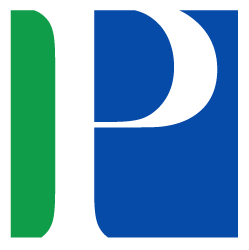The impact of the public library as a children’s reading resource
Abstract
Aim: This research was carried out in the Colombo Metropolitan Area of Sri Lanka to evaluate the public library as a reading resource for children in that region.
Method: The case study for this research was decided to be the Colombo Public Library in Sri Lanka, and the research was conducted using the survey method. Participants in the study were children younger than 14 years old who were attendees of the Colombo Public Library in Sri Lanka. The population was divided into different strata, and a nonprobability sampling technique was used to choose which samples to take. The survey’s data collection was accomplished through the use of a questionnaire in addition to structured interviews.
Findings: Based on the results, the children’s library should be placed where children can quickly get to it. This children’s library was frequented by many seventh- and ninth-graders. It’s safe to assume that most school-aged children in the Colombo Metropolitan Area regularly visit the children’s library. The children’s library does not offer standard services such as interlibrary loans, documentation, government publications, or audiovisual services. An uneven number of Sinhala, Tamil, and English books are available at the library. Although magazines are few and far between, their information, intelligence, and appreciation are too advanced for children under 14. The lack of Tamil and English-language newspapers for readers is one of the collection’s most serious flaws. It prevents children from learning to be good people and succeeding in school.
Implications/Novel Contribution: The Colombo Public Library, which aims to encourage young people to develop healthy reading habits, can use this analysis to improve the quality of library services they provide to young people. Any library can use the information to serve its patrons better, and new children’s library development schemes can be formulated with the information in mind.
References
Bundy, A., et al. (2006). Supporting students: The educational contribution of Australia’s public libraries. Australasian Public Libraries and Information Services, 19(3), 126-130.
Campana, K., Mills, J. E., & Ghoting, S. N. (2016). Supercharged storytimes: An early literacy planning and assessment guide. California, CA: ALA Editions.
Chalfoun, F., & Davidaviciene, V. (2018). Internet and aging population. International Journal of Humanities, Arts and Social Sciences, 4(6), 227-234. doi:https://dx.doi.org/10.20469/ijhss.4.10001-6
Colvin, M., & Lionel, R. (1957). Public library services for children: United nations educational scientific and cultural organization. Retrieved from https://bit.ly/3gWd5ax
Diamant-Cohen, B., Prendergast, T., Estrovitz, C., Banks, C., & Van Der Veen, K. (2012). We play here! Children & Libraries, 10(1), 3-15.
Hand Book of Comparative Librarianship. (1986). Guidelines for public libraries prepared for the IFLA section of public libraries, a useful guide to the international sceneis. Retrieved from https://bit.ly/38qLeMb
Hart, G. (2000a). Cape town’s children’s librarians: Cinderellas of the library world? Cape Librarian, 44(4), 32-33.
Hart, G. (2000b). A study of the capacity of Cape Town’s children’s librarians for information literacy education. Mousaion Pretoria, 18(2), 67-84.
Hill, C., Proffitt, M., & Streams, S. (2016). IMLS focus: Learning in libraries. Kansas, MO: Kansans City Public Library.
Howard, V. (2011). What do young teens think about the public library? The Library Quarterly, 81(3), 321-344. doi:https://doi.org/10.1086/660134
International Federation of Library Associations and Institutions. (2017). Draft: IFLA guidelines for library services to people experiencing homelessness. Retrieved from https:/bit.ly/3ntjufQ
Justice, L. M., Piasta, S. B., Capps, J. L., Levitt, S. R., & Library, C. M. (2013). Library-based summer reading clubs: Who participates and why? The Library Quarterly, 83(4), 321-340. doi:https://doi.org/10.1086/671911
Masuo, D., & Cheang, M. (2017). Disconnect between parents values for saving and actual savings behavior: Impact on childrens education and financial decision-making. Journal of Advances in Humanities and Social Sciences, 3(6), 332-339. doi:https://doi.org/10.20474/jahss-3.6.5
McKeney, L. (1983). Comparative librarianship. Retrieved from https://bit.ly/3aieozr
Miller, C., & Zickuhr, R. L., K. (2013). Parents, children, libraries, and reading. Washington, DC, WA: Pew Research Center.
Mills, J. E., Romeign-Stout, E., Campbell, C., & Koester, A. (2015). Results from the young children, new media, and libraries survey: What did we learn? Children and Libraries, 13(2), 26-32. doi:https://doi.org/10.5860/cal.13n2.26
Murison, W. J. (1988). The public library: Its origins, purpose and significance. London, UK: Bingley Publisher.
Paulino, H., Gatpandan., & Shaneth, C. A. (2017). Implementing knowledge discovery in enhancing university student services portfolio management in higher education institutions. Journal of Advanced Research in Social Sciences and Humanities, 2(3), 212-220. doi:https://doi.org/10.26500/jarssh-02-2017-0306
Prendergast, T. (2011). Beyond storytime. Children & Libraries, 9(1), 20-30.
Public Libraries Magazine. (2011). American library association. Retrieved from https://bit.ly/3nDMe5C
Rubin, R. E., et al. (2017). Foundations of library and information science. New York, NY: American Library Association.
Sanchez, V. (2014). More than just hanging out: Reading lounges bridge the summer reading gap. Children and Libraries, 12(2), 16-20. doi:https://doi.org/10.5860/cal.12n2.16
Society of Chief Librarians. (2016). The universal offer for public libraries. Retrieved from https://bit.ly/34kkThA
Taskforce. (2016). Libraries deliver: Ambition for public libraries in England 2016-2021. Retrieved from https://bit.ly/2Kf5t7l
United Nations Education, Science and Culture Public Library Manifesto. (1972). UNESCO bulletin for libraries 26, Paris. Retrieved from https://bit.ly/34kkw6G

This work is licensed under a Creative Commons Attribution-NonCommercial 4.0 International License.











.png)









